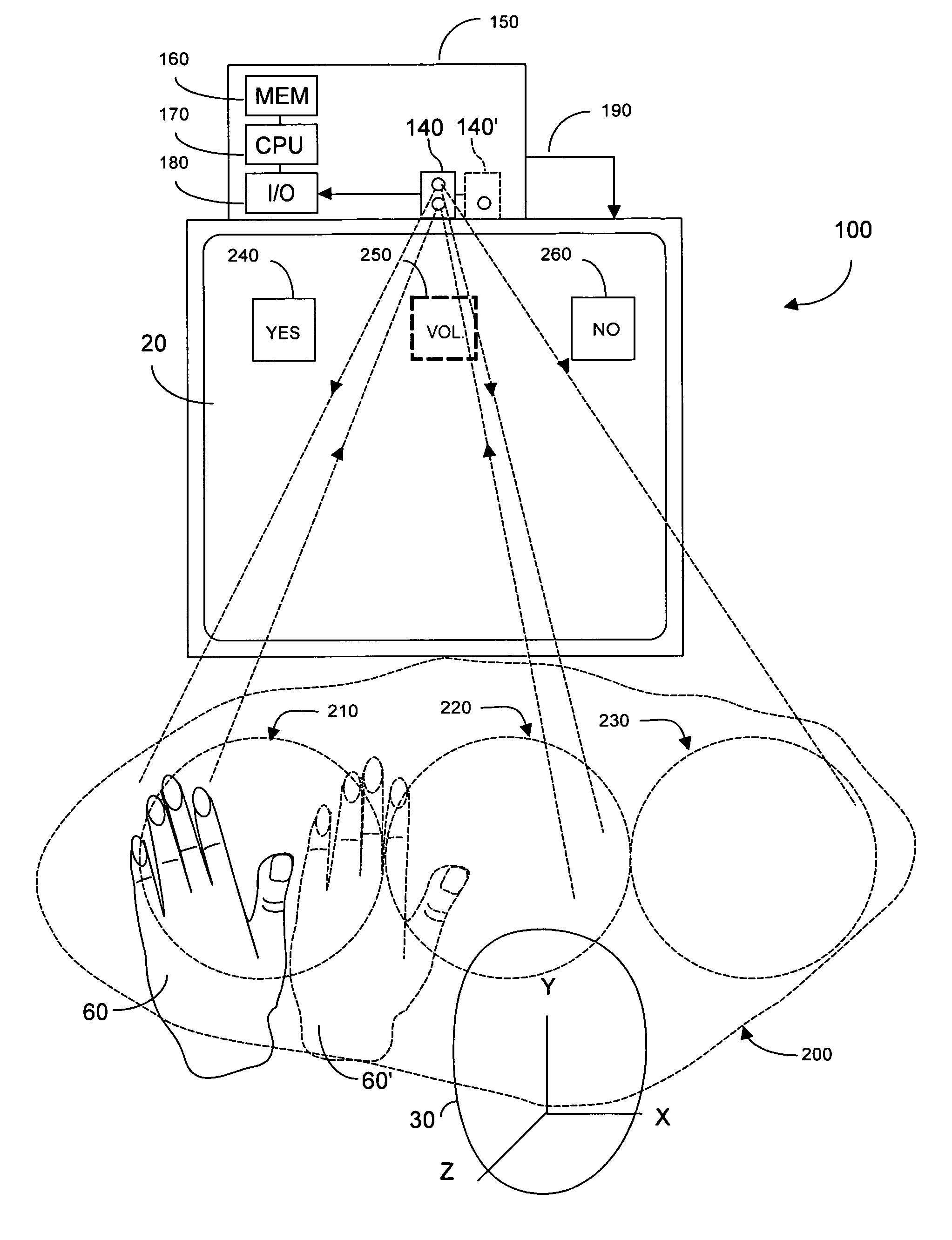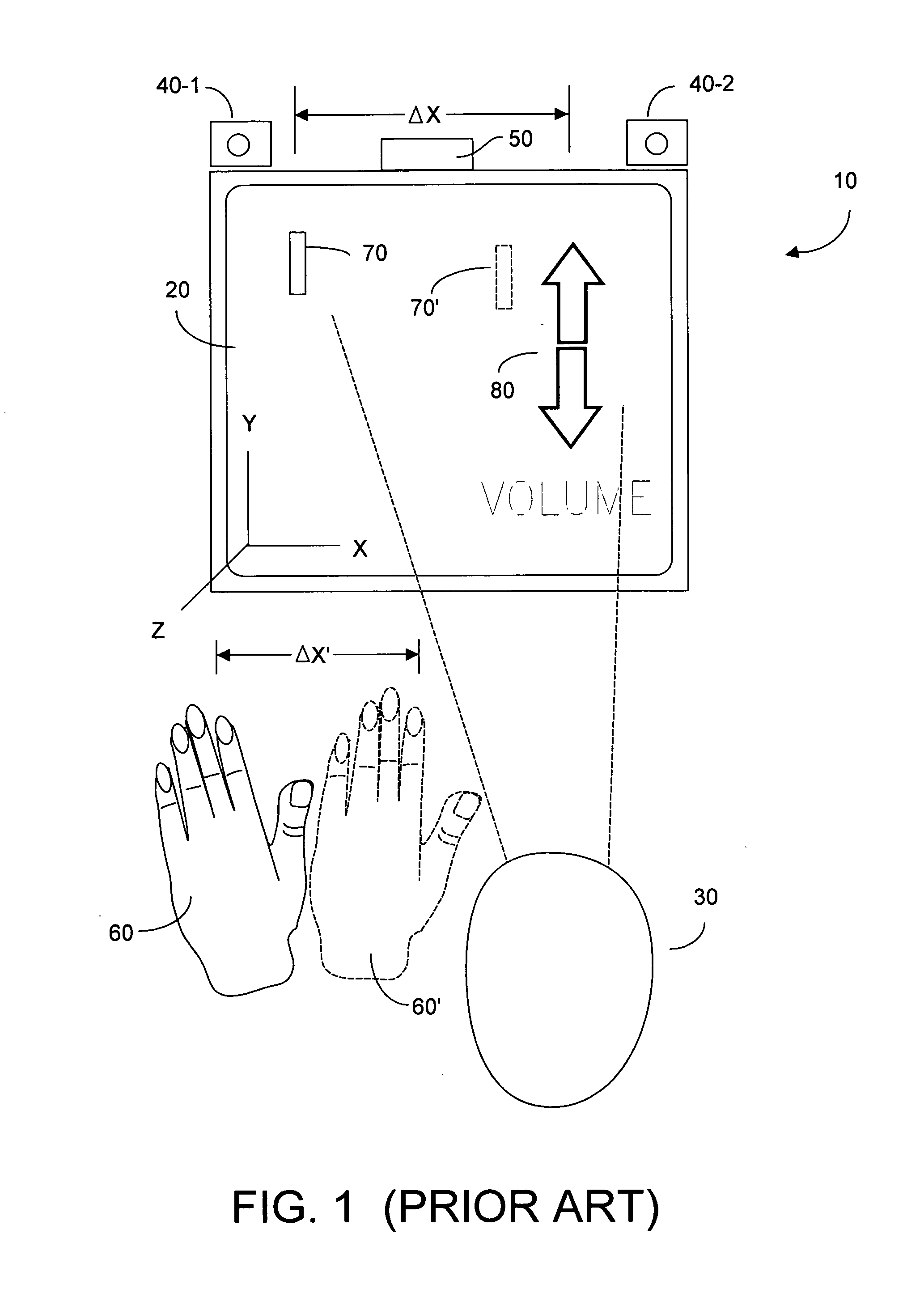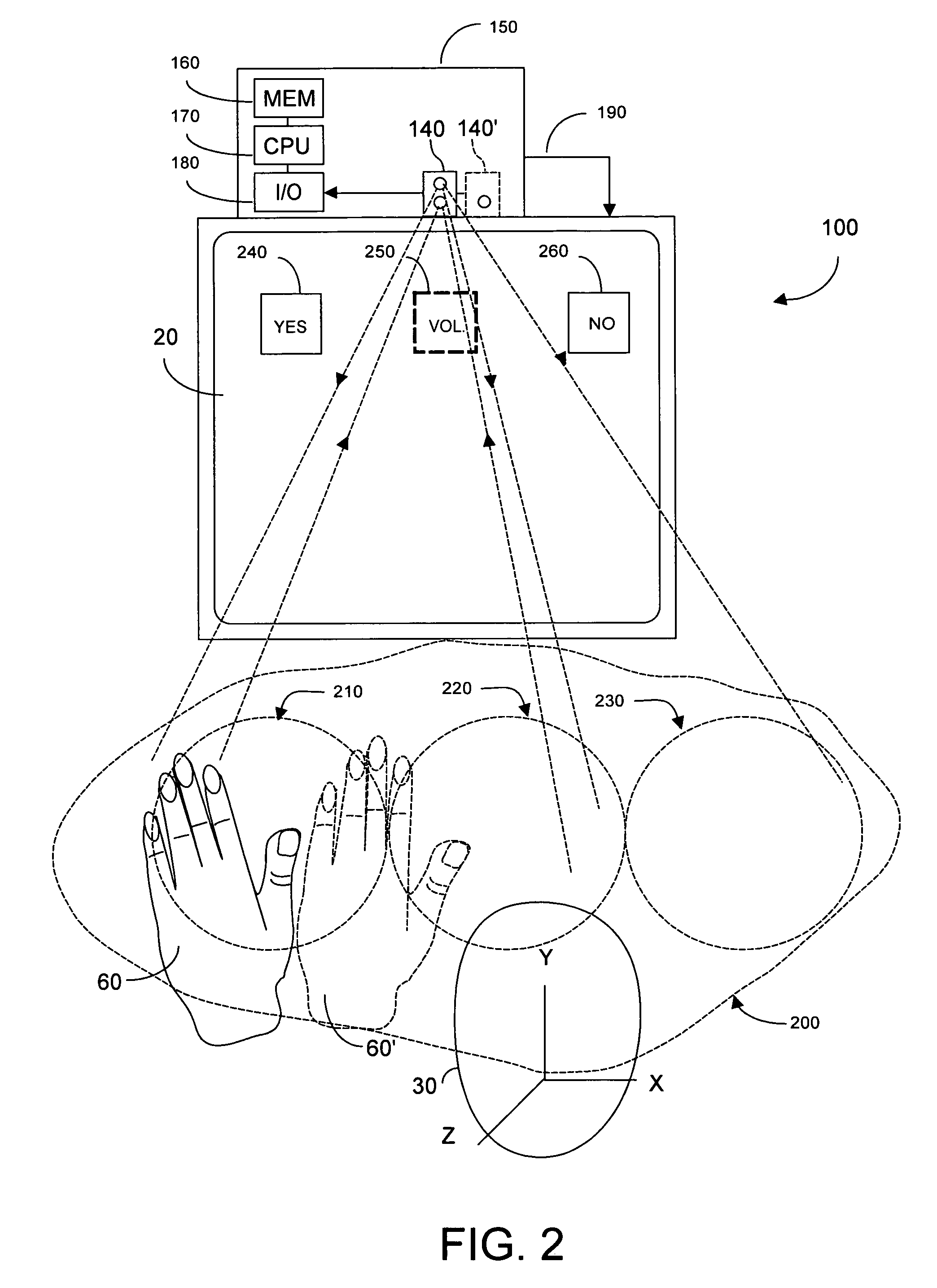Method and system implementing user-centric gesture control
a gesture control and gesture technology, applied in the field of methods and systems usable with depth imaging systems, can solve problems such as occlusion and so-called correspondence ambiguity, difficult to combine the imagery acquired by two spaced-apart cameras to unambiguously, and suffer from an imprecise baselin
- Summary
- Abstract
- Description
- Claims
- Application Information
AI Technical Summary
Benefits of technology
Problems solved by technology
Method used
Image
Examples
Embodiment Construction
[0028]FIG. 2 depicts a gesture recognition system 100, according to embodiments of the present invention. System 100 includes a preferably three-dimensional imaging system 140, such as is known in the prior art, whose effective field of view encompasses a three-dimensional space in which at least one user may be present. For ease of illustration, system 140 is depicted as a generic TOF system, although a non-TOF imaging system may instead be used. For example, a system employing multiple cameras might be used, as could other prior art three-dimensional imaging systems, indicated generically by 140′. In FIG. 2, exemplary TOF system 140 emits optical energy (shown as phantom lines emanating away from system 140) towards the user 30, and detects a fraction of that optical energy reflected by the user or other object(s) within the field of view. This reflected energy is depicted as phantom lines directed back to TOF system 140. Gesture recognition system 100 also includes a processor un...
PUM
 Login to View More
Login to View More Abstract
Description
Claims
Application Information
 Login to View More
Login to View More - R&D
- Intellectual Property
- Life Sciences
- Materials
- Tech Scout
- Unparalleled Data Quality
- Higher Quality Content
- 60% Fewer Hallucinations
Browse by: Latest US Patents, China's latest patents, Technical Efficacy Thesaurus, Application Domain, Technology Topic, Popular Technical Reports.
© 2025 PatSnap. All rights reserved.Legal|Privacy policy|Modern Slavery Act Transparency Statement|Sitemap|About US| Contact US: help@patsnap.com



